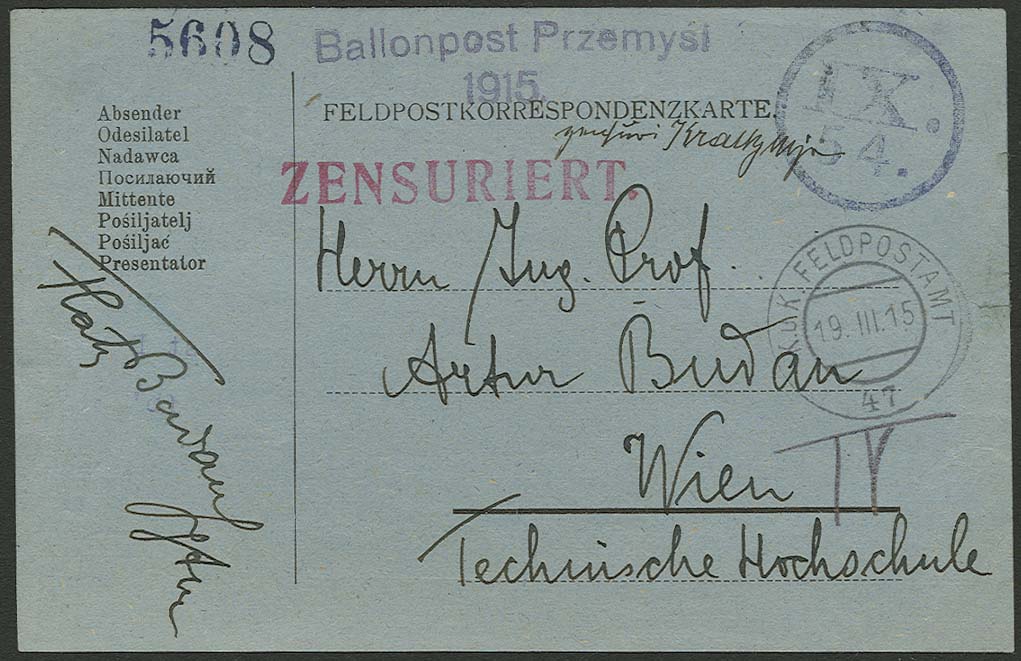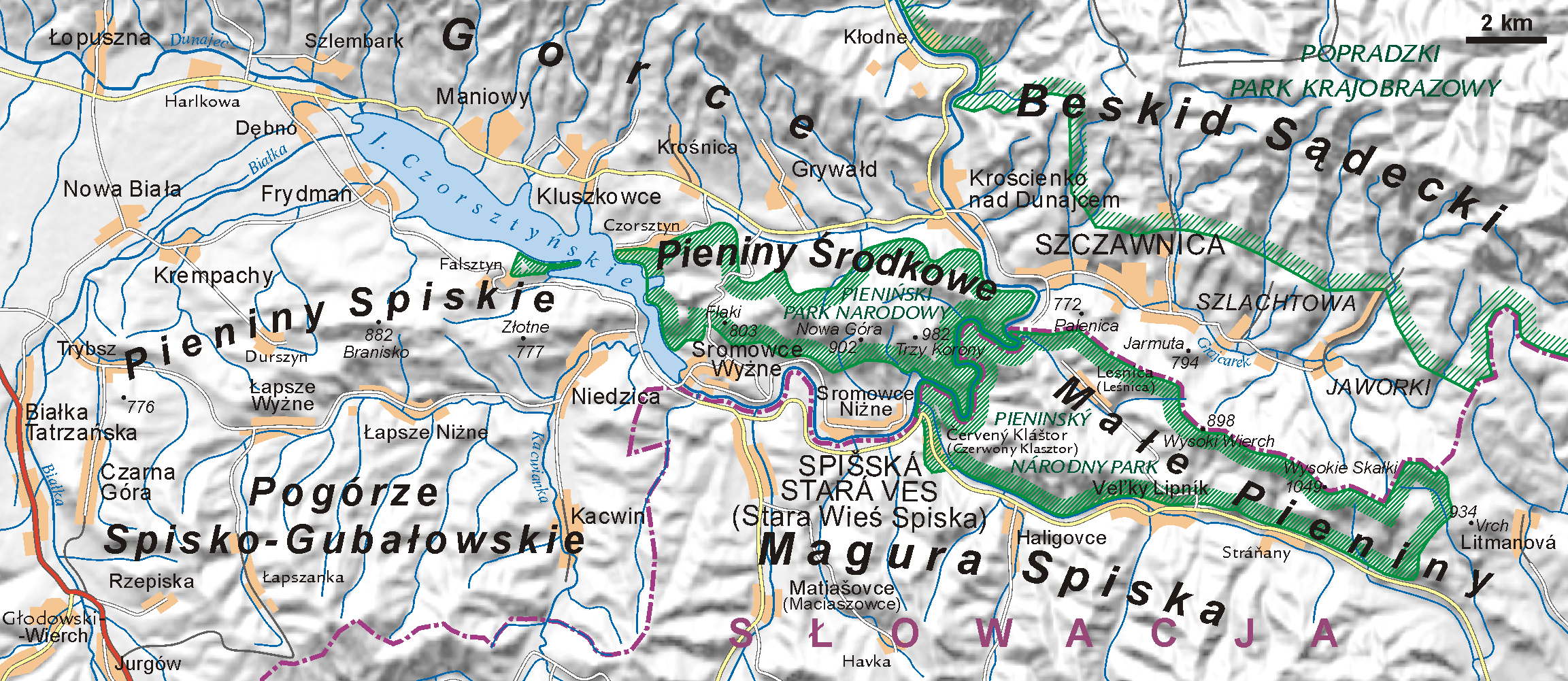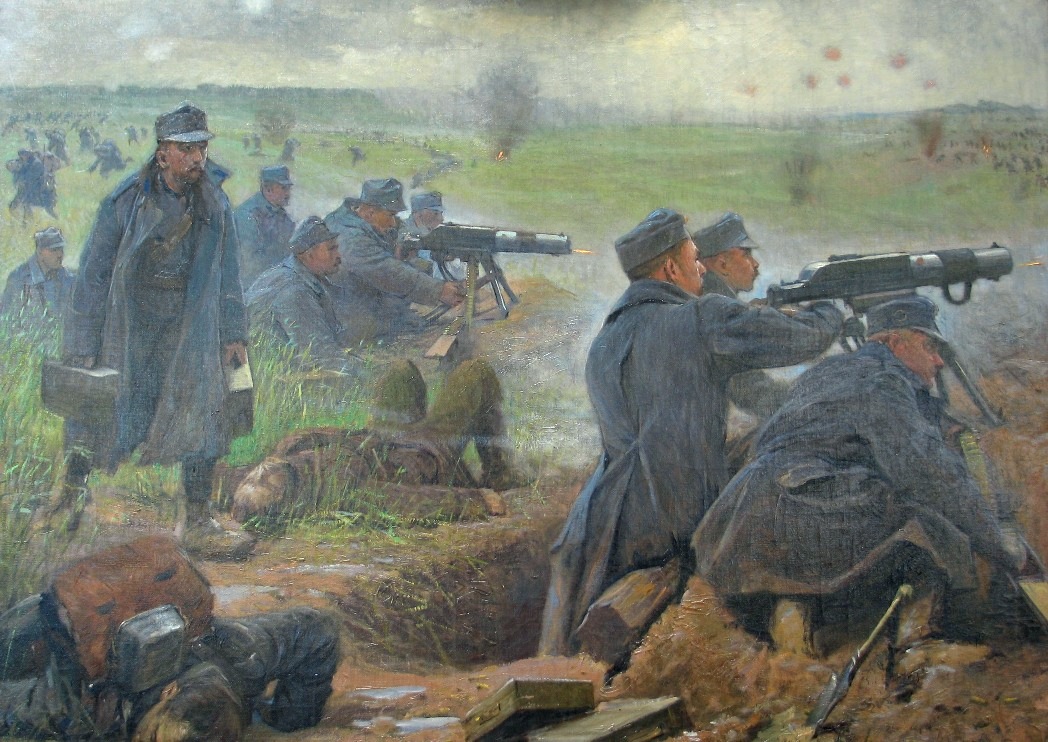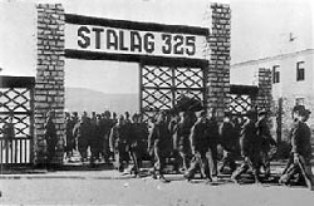|
Battle Of Rawa
Battle of Rawa (also written as ''-Rava'', ''-Rawa-Ruska'', ''-Rava-Ruska'', or ''-Rava-Russka'') was an early stage World War I battle between Austria-Hungary and Russia, from 3-11 September, 1914. The Russian armies had defeated their opponents and pushed them back to the Carpathian Mountains. The battle was part of the series of engagements known as Battle of Galicia. Background According to Prit Buttar, "Conrad issued further orders to prepare for what he hoped would be a decisive blow by Auffenberg's Fourth Army. Leaving only four infantry divisions and two cavalry divisions facing north, under the collective command of Archduke Joseph Ferdinand, Auffenberg was to turn and march southeast. Meanwhile, Ivanov finally prevailed upon Ruzsky to turn northwest, so that he could march to the aid of Plehve's army. Unwittingly, the Russians and Austro-Hungarians thus created the circumstances that would lead to a head-on collision between Auffenberg's Fourth Army and Ruzsky's ... [...More Info...] [...Related Items...] OR: [Wikipedia] [Google] [Baidu] |
Eastern Front (World War I)
The Eastern Front or Eastern Theater, of World War I, was a theater (warfare), theater of operations that encompassed at its greatest extent the entire frontier between Russian Empire, Russia and Kingdom of Romania, Romania on one side and Austria-Hungary, Kingdom of Bulgaria, Bulgaria, the Ottoman Empire, and German Empire, Germany on the other. It ranged from the Baltic Sea in the north to the Black Sea in the south, involved most of Eastern Europe, and stretched deep into Central Europe. The term contrasts with the Western Front (World War I), Western Front, which was being fought in Belgium and French Third Republic, France. Unlike the static warfare on the Western Front, the fighting on the geographically larger Eastern Front was maneuver warfare, more dynamic, often involving the flanking and encirclement of entire formations, and resulted in over 100,000 square miles of territory becoming occupied by a foreign power. At the start of the war Russia launched offensives agai ... [...More Info...] [...Related Items...] OR: [Wikipedia] [Google] [Baidu] |
Prit Buttar
Prit Buttar is a British general practitioner and writer. He has written twelve history books on the eastern fronts of World War I and World War II, and two novels. Buttar was a Senior Partner at Abingdon Surgery until he moved to Scotland in late 2017. Career Buttar studied medicine at Oxford University and London University, and served in the British Army as a surgeon and medical officer for five years. He later worked in Bristol as a general practitioner (GP). Buttar worked as a GP in Abingdon-on-Thames from 2000 to 2017 and served on the GP's Committee of the British Medical Association. He is Chairman of the Oxfordshire Local Medical Committee. Buttar's first book, ''Battleground Prussia'', was inspired by one of his patients. The 83-year-old patient recalled stories about her life as a nurse in East Prussia and her escape from the Red Army near the end of World War II. Buttar spent 8 years writing the book. His second book, ''Between Giants'', is a study of the battles fo ... [...More Info...] [...Related Items...] OR: [Wikipedia] [Google] [Baidu] |
Franz Joseph I Of Austria
Franz Joseph I or Francis Joseph I ( ; ; 18 August 1830 – 21 November 1916) was Emperor of Austria, King of Hungary, and the ruler of the Grand title of the emperor of Austria, other states of the Habsburg monarchy from 1848 until his death in 1916. In the early part of his reign, his realms and territories were referred to as the Austrian Empire, but were reconstituted as the dual monarchy of Austria-Hungary in 1867. From 1 May 1850 to 24 August 1866, he was also president of the German Confederation. In December 1848, Franz Joseph's uncle Emperor Ferdinand I of Austria, Ferdinand I abdicated the throne at Olomouc, as part of Minister President Felix zu Schwarzenberg's plan to end the Hungarian Revolution of 1848. Franz Joseph then acceded to the throne. In 1854, he married his first cousin Empress Elisabeth of Austria, Duchess Elisabeth in Bavaria, with whom he had four children: Archduchess Sophie of Austria, Sophie, Archduchess Gisela of Austria, Gisela, Rudolf, Crown Pri ... [...More Info...] [...Related Items...] OR: [Wikipedia] [Google] [Baidu] |
Archduke Friedrich, Duke Of Teschen
Archduke Friedrich, Duke of Teschen (Friedrich Maria Albrecht Wilhelm Karl; 4 June 1856 – 30 December 1936) was a member of the House of Habsburg-Lorraine and the Supreme Commander of the Imperial and Royal Armed Forces of the Austro-Hungarian Empire during World War I, having previously served as both commander-in-chief of the Imperial-Royal Landwehr and inspector-general of the Austro-Hungarian Army. Early life Friedrich was born at the castle of Gross Seelowitz in Moravia (today Židlochovice near Brno in the Czech Republic), the son of Karl Ferdinand, Archduke of Austria and his wife Archduchess Elisabeth Franziska of Austria. His siblings included Queen Maria Cristina of Spain, Archduke Charles Stephen of Austria, a candidate for the Kingdom of Poland, and Archduke Eugen of Austria, an Austrian officer. When Friedrich's uncle Archduke Albert, Duke of Teschen died in 1895, he and his brothers each inherited large estates. Friedrich owned properties at Ungarisch-Al ... [...More Info...] [...Related Items...] OR: [Wikipedia] [Google] [Baidu] |
Siege Of Przemyśl
The siege of Przemyśl was the longest siege in Europe during the First World War, and the second largest in the entire conflict, after the Siege of Medina. The siege was a crushing defeat of the Austro-Hungarian Army by the Russian Army. Przemyśl was a fortress-town and stronghold on the River San in what is now southeastern Poland. The investment of Przemyśl began on 16 September 1914 and was briefly suspended on 11 October, due to an Austro-Hungarian offensive. The siege resumed on 9 November and the Austro-Hungarian garrison surrendered on 22 March 1915, after holding out for a total of 133 days. The siege has been referred to as "Austria-Hungary's Stalingrad". Background In August 1914, Russian armies moved against both German East Prussia and one of Austria-Hungary's largest provinces, Galicia, straddling the present-day border between Poland and Ukraine. Its advance into Germany was soon repulsed but its Galician campaign was more successful. General Nikolai Ivano ... [...More Info...] [...Related Items...] OR: [Wikipedia] [Google] [Baidu] |
Przemyśl Fortress
Przemyśl () is a city in southeastern Poland with 56,466 inhabitants, as of December 2023. Data for territorial unit 1862000. In 1999, it became part of the Subcarpathian Voivodeship. It was previously the capital of Przemyśl Voivodeship. Przemyśl owes its long and rich history to the advantages of its geographic location. The city lies in an area connecting mountains and lowlands known as the Przemyśl Gate (Brama Przemyska), with open lines of transport, and fertile soil. It also lies on the navigable San River. Important trade routes that connect Central Europe from Przemyśl ensure the city's importance. The Old Town of Przemyśl is listed as a Historic Monument of Poland. Since the start of the Russian invasion of Ukraine on 24 February 2022, Przemyśl has been a point of refuge for many Ukrainians, as it is located near the Poland–Ukraine border and serves as the end point of the Lviv–Przemyśl railway junction. Names Different names in various languages have ide ... [...More Info...] [...Related Items...] OR: [Wikipedia] [Google] [Baidu] |
Biała (Dunajec)
Biała is a river in eastern central Poland, a right tributary of the Dunajec, which it meets in the town of Tarnów. Arising in the Laborec Highlands of Slovakia Slovakia, officially the Slovak Republic, is a landlocked country in Central Europe. It is bordered by Poland to the north, Ukraine to the east, Hungary to the south, Austria to the west, and the Czech Republic to the northwest. Slovakia's m ...,https://gq.pgi.gov.pl/article/download/8537/pdf_603 (pdf, Polish language) the river flows through the Polish towns of: * Zakopane * Poronin * Biały Dunajec * Szaflary * Nowy Targ Among its own tributaries is the Wątok. References Rivers of Poland Rivers of Lesser Poland Voivodeship {{Poland-river-stub ... [...More Info...] [...Related Items...] OR: [Wikipedia] [Google] [Baidu] |
Dunajec
The Dunajec (; Goral dialects: ''Dónajec''; ) is a river running through northeastern Slovakia and southern Poland. It is also regarded as the main river of the Goral Lands. It is a right tributary of the Vistula River. It begins in Nowy Targ at the junction of two short mountain rivers, Czarny Dunajec and Biały Dunajec (Black and White Dunajec). Dunajec forms the border between Poland and Slovakia for in the Pieniny Środkowe (Slovak: Centrálne Pieniny) range, east of the Czorsztyn reservoir. Geography The Dunajec is long, including its source river Czarny Dunajec,Statistical Yearbook of the Republic of Poland 2017 [...More Info...] [...Related Items...] OR: [Wikipedia] [Google] [Baidu] |
River San
The San (; ''Sian''; ) is a river in southeastern Poland and western Ukraine. It is a tributary of the river Vistula. With a length of , the San is the 6th-longest Polish river. It has a basin area of 16,877 km2, of which 14,426 km2 is in Poland. Etymology in proto-Indo-European languages means 'speed' or 'rapid stream'. In Celtic languages, means 'river'. Course The San arises in the Carpathian Mountains near the village of Sianky, at an elevation of , exactly on the Polish-Ukrainian border () and on the continental watershed, and forms the border between Poland and Ukraine for approximately its first . Poland's largest artificial lake, Lake Solina, was created by a dam on the San River near Lesko. The San flows into the Vistula near Sandomierz. Tributaries History of the region Historical records first mention the river in 1097 as ''Sanъ'', ''reku Sanъ'', ''k Sanovi''; then as ''nad Sanomъ'' (1152) and ''Sanu'' (1287). On the old maps of the ... [...More Info...] [...Related Items...] OR: [Wikipedia] [Google] [Baidu] |
1st Army (Austria-Hungary)
The 1st Army () was a field army-level command in the ground forces of Austria-Hungary during World War I. The army fought in Galicia and Russian Poland in 1914–15 before being briefly dissolved in the summer of 1916. Shortly afterwards, it was reformed and sent to fight in the Romanian Campaign for the next two years. The 1st Army was demobilized in April 1918 due to its heavy losses, following Romania's surrender. History The 1st Army was formed in 1914 as part of Austria-Hungary's mobilization following its declaration of war on Serbia and Russia, carrying out the prewar plans for the formation of six field armies. Just as all Austro-Hungarian field armies, it consisted of a headquarters and several corps, along with some unattached units.John Dixon-NuttalTHE AUSTRO-HUNGARIAN ARMY 1914-18. Chapter 4: The Army in the Field/ref> The 1st Army was put under the command of General of the Cavalry Viktor Dankl von Krasnik and was composed of the I, V, and X Corps, originating ... [...More Info...] [...Related Items...] OR: [Wikipedia] [Google] [Baidu] |
Rawa Ruska
Rava-Ruska (, ; ; ) is a city in Lviv Raion, Lviv Oblast, western Ukraine. It is a border town between Ukraine and Poland. The border checkpoint is situated west of the city, along the international autoroute Warsaw–Lviv. Rava-Ruska hosts the administration of Rava-Ruska urban hromada, one of the hromadas of Ukraine. Its population is approximately History Rawa-Ruska was founded in 1455 by the Polish prince Władysław I of Płock, Duke of Bełz and Mazovia. He added the suffix "Ruska", meaning "Ruthenian" (during this time, the urban Ukrainian inhabitants were referred to as "Ruthenians"), to distinguish it from Rawa Mazowiecka located further west. Due to a convenient location along the merchant trail from Lublin to Lviv, the newly located town quickly developed. For centuries, Rawa was part of the Kingdom of Poland and the Polish–Lithuanian Commonwealth. It remained in private hands of several consecutive szlachta families, such as the Głogowski, Suchodolski, Rzecz ... [...More Info...] [...Related Items...] OR: [Wikipedia] [Google] [Baidu] |
Niemirów, Biłgoraj County
Niemirów is a village in the administrative district of Gmina Frampol, within Biłgoraj County, Lublin Voivodeship, in eastern Poland. It lies approximately south of Frampol, north-west of Biłgoraj, and south of the regional capital Lublin. The locale's designation derives from the Slavic given name Niemir Niemir, Niemirz, Niemierz – is a male Slavic given name of Old Slavic origin, present in other Slavic nations (in different forms and spellings). The name is composed of ''nie-'' (a negation) as well as ''-mir'' ("peace", "good", "great", " .... References Villages in Biłgoraj County {{Biłgoraj-geo-stub ... [...More Info...] [...Related Items...] OR: [Wikipedia] [Google] [Baidu] |






